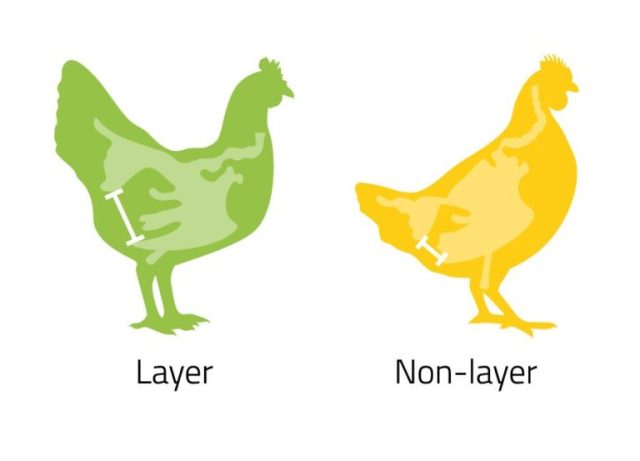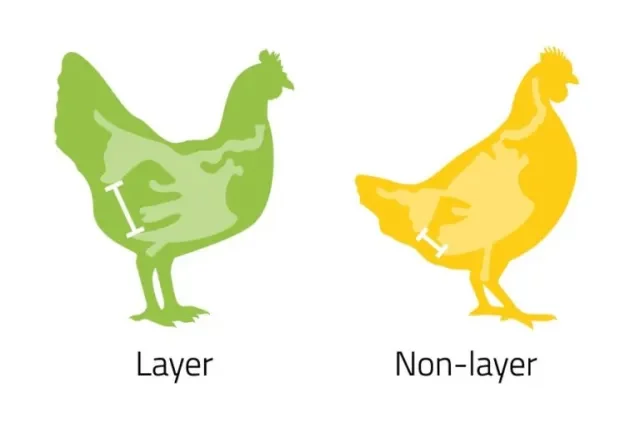How to Ensure Sustainable Egg Production
This articles examines the processes involved to encourage sustainable egg production especially as consumer demand for non-cage produced eggs continues to rise daily, what are the challenges faced in maintaining sustainable egg production?
Eggs are produced by laying hens also known as layers. Laying hens are specialized breeds of chicken that have been selected for their high rates of egg production and are different to the breeds reared for meat, for instance; broilers and cockerels as shown in Figure 1 below.

According to research, the top global egg producer country is China, followed by the combined EU-member countries. In 2018 the EU countries held 397 million laying hens. In Europe, the top egg producing countries are Germany, Poland, UK, France and Spain each contributing with approximately 11% of the total laying hens.
Read Also: Causes of Regular Abortion on Pregnant Goats and Control Measures
Production Cycle of Laying Hens
The basic production cycle of laying hens is shown in Table 1 and the egg production cycle occurs as a natural process during the maturity stage about 18 weeks and above.
However, as the laying hens reach later stages of maturity, their egg laying rate gradually declines as a sign that they are getting old and they can be sold as old layers for meat.

| Hatchery | Growing (18 weeks): | Maturity (19 to 60-70 weeks of age) |
| Chicks hatch in a specialised hatchery facility. | Pullets (young hens) are reared at a growing facility for 18 weeks. | Once they reach target body weight, hens are moved to a lay house and exposed to an increasing day length with artificial light to stimulate egg laying. |
| An egg takes 23-27 hours to form and be laid. The shorter the time, the more days in a row an egg will be laid. | ||
| Peak laying period 25-39 weeks of age. Egg laying then declines until the end of the lay. At approximately 72 weeks old, the birds leave the laying system. |
Light is an important factor in stimulating laying chickens also referred to as laying hens to lay eggs. It is the main environmental cue that the hen receives, which in turn regulates hormone levels that affect egg laying and increases maximum egg production which results to increase in profit for the poultry farmer.
Both the duration of the light period and the intensity of the light are very important, and farmers need to provide artificial lighting in specially developed cycles to optimize both frequency of production and the quality of eggs produced.
Read Also: Effects of Global Change on Terrestrial Biosphere (Ecosystems)
How Eggs are Produced
There are three different types of poultry egg production systems commonly in use by poultry farmers: cages, barns and free-range. The distribution by poultry egg production system in the EU as of 2018 is shown in the pie chart below (Figure 3).

The conventional, unenriched cage (battery cage) was developed in the 1950s for high intensity egg production by maximizing egg production per unit area as the image below presents.

The reduced welfare state of hens kept in conventional battery cages led to the EU banning their use in 2012, and the introduction of new minimum welfare standards for caged hens.
A new enriched cage is now used in many EU countries, along with the other two common egg production systems. All the egg production systems in the EU are tightly regulated with respect to welfare standards.
In enriched cage systems, hens spend their productive life indoors in large cages with other hens, where they have access to all the facilities required to meet their essential needs.
In barn-based systems hens are kept in large flocks in specialized barns, also designed to meet essential needs. In free-range systems, hens live in barns and are provided with access to an outdoor area during the day.
Organic systems are similar to free-range but additional organic husbandry standards are met, including providing organically produced feed.
A comparison of the main features of the enriched cage and free-range systems is shown below:
| Enriched cage system | Free-range system | |
| Setting | Indoors | Indoors with access to outdoors during the day |
| Egg mass | Average 57g | Average 60g |
| Stocking density (hens per unit area) | 750cm2 cage area per hen | No greater than 9 hens per m2 usable area |
| Furnishing | Nests, perching space, bedding litter to peck and scratch, unrestricted access to feed and water troughs. | Nests, perching space, bedding litter to peck and scratch, unrestricted access to feed and water troughs. Outdoor ‘range’ area. |
| Feed | Specially formulated pelleted feed provided continuously. | Specially formulated pelleted feed provided continuously. |
| Feed conversion efficiency (g feed consumed/ g egg produced) | 2.11 | 2.17 |
| Production efficiency | Shorter production cycle in a controlled environment for mass production. | Longer production cycle with higher risks and operating costs. |
Challenges towards Ensuring Sustainable Egg Production
The biggest challenge the egg industry has faced is the transition from battery cages to enriched cages or free-range systems in order to improve animal welfare. Consumer demand for non-cage produced eggs continues to rise across Europe.
There are significant costs associated with transitioning from cage-based to free-range systems and at the same time, the farmer has to accept reduced poultry feed efficiency and increases in rejected eggs.
Meeting the hens nutritional requirements through proper feeding of balanced diets is a critical factor in production efficiency. Hens are monogastric and, like pigs, require a high energy and protein feed to maintain health and support egg production. Feed is typically given “ad libitum”, meaning hens can feed at any time and consume as much as they need.
Read Also: How to Neuter (Castrate) Ruminant Male Animals: Risks and Benefits









